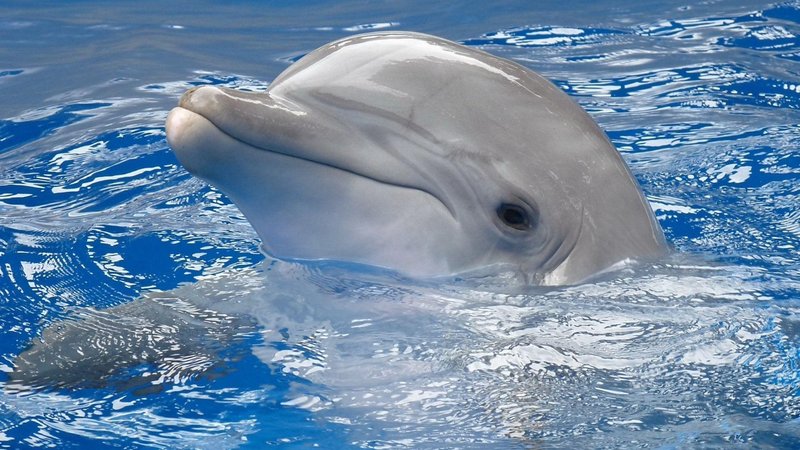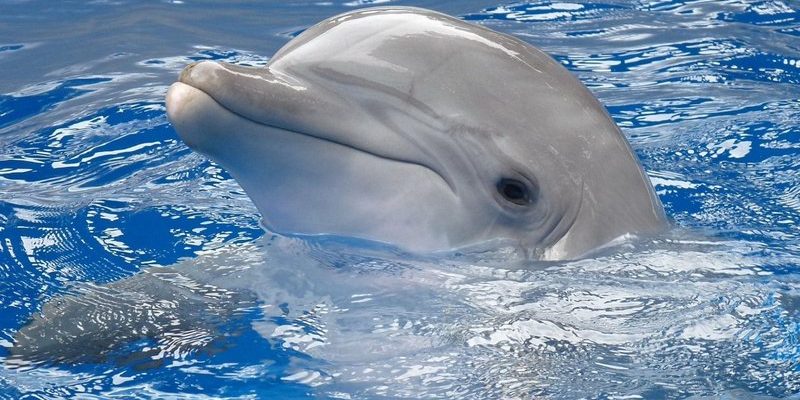
So, grab a coffee and get comfy because we’re about to dive into the deep blue sea of dolphin facts! You might think you know a lot about them, but you’re in for a treat. From their communication skills to their unique social structures, here are ten cool things you probably didn’t know about dolphins.
Dolphins Are Super Smart
When we talk about dolphin intelligence, we’re not just throwing around empty compliments. Dolphins have one of the largest brains relative to their body size compared to other animals. This means they are not only good at learning tricks but also solving complex problems. For example, dolphins can recognize themselves in mirrors, a sign often viewed as a marker of self-awareness.
Imagine this: in an experiment, dolphins were shown their reflection in a mirror, and instead of just swimming away, they examined themselves closely. They even used the mirror to inspect parts of their bodies that they couldn’t normally see, like the underside of their fins. That’s pretty impressive, right? It’s like they’re saying, “Hey, look at me!”
They’re not just book-smart, either. Dolphins also exhibit advanced social skills. They often work together to hunt, employing complex strategies to catch fish. This teamwork shows a deep understanding of cooperation and communication—two hallmarks of intelligence. Honestly, watching them in action can feel like witnessing a well-rehearsed performance.
They Have Their Own Language
You might think dolphins are just making playful sounds, but they actually talk to each other! Dolphins communicate using a series of clicks, whistles, and body movements. Each dolphin has its own unique whistle, much like a name, which helps them identify one another. It’s like having your personal ringtone that only your friends recognize.
Their communication isn’t limited to sounds. Dolphins also use their bodies to convey messages through leaps, spins, and even a flick of their tails. Imagine trying to have a conversation using dance moves! This complex form of interaction demonstrates their intricate social structures and relationships. When dolphins get together, it’s not just a party; it’s a social gathering filled with conversation.
Furthermore, researchers have even recorded various dialects among different dolphin populations. This means dolphins in one area might sound different from those in another, just like regional accents in humans. It shows that dolphins, while they might seem simple at first glance, have a rich social life and communication system.
They’re Not Fish!
You might be surprised to learn that dolphins are actually mammals, not fish. That’s right! Dolphins belong to a group called cetaceans, which also includes whales and porpoises. Like us, dolphins breathe air, give birth to live young, and nurse their babies. So, the next time someone refers to dolphins as fish, you can correct them with confidence!
Being mammals means they have a warm-blooded metabolism. This helps them maintain their body temperature despite the much cooler ocean water. Also, dolphins have lungs instead of gills. They come to the surface regularly to breathe, which is why you see them leaping out of the water—it’s not just for fun; it’s a necessity!
It’s also worth mentioning that dolphin babies, called calves, are born tail-first. This unique birthing method is crucial because it helps prevent the newborn from drowning. How’s that for maternal instincts? Dolphins really do care for their young, often spending years nurturing them and teaching them essential survival skills.
Dolphins Are Social Creatures
Dolphins are incredibly social animals. They live in groups called pods, which can range from a few individuals to over a hundred. These pods are like tight-knit families, often consisting of mothers and calves. The social structure within pods is fascinating; they have strong bonds and often engage in social behaviors like playing and grooming each other.
Lifespan can vary among species, but dolphins can live to be around 40-60 years old in the wild. This long life gives them plenty of time to build deep connections with others in their pod. They often have friendships that last for years, and it’s not uncommon for them to work together in hunting or protection against predators.
You might even catch dolphins cooperating with other species! For example, in some areas, dolphins will work alongside fishermen, helping to guide fish into nets. Talk about teamwork! This mutualistic relationship benefits both dolphins and humans, showcasing their ability to understand and collaborate with other species.
Dolphins Use Echolocation
Echolocation is a fascinating skill that dolphins use to navigate and hunt in the dark depths of the ocean. Imagine you’re in a pitch-black room, and instead of using your eyes, you create sound waves that bounce off objects, helping you “see” your surroundings. That’s exactly what dolphins do!
They produce clicks and listen for the echoes that bounce back from nearby objects. This allows them to detect everything from the shape of a fish to the distance of a rock. Echolocation is so precise that they can identify the size and even the texture of objects around them.
This skill is particularly useful when hunting. Dolphins can locate prey in murky waters, where visibility is low. In fact, they can even find fish hiding under the sand! It’s like having a built-in sonar system that keeps them well-fed and safe. Honestly, it’s hard not to be amazed by the abilities of these creatures.
Dolphins Have Unique Personalities
Just like humans, dolphins have their own personalities. Some may be more boisterous and playful, while others might be calm and reserved. Research has shown that dolphins can express a range of emotions, such as joy, grief, and affection. They can even hold grudges against other dolphins—how’s that for drama in the ocean?
You might find it interesting that some dolphins engage in unique behaviors that reflect their personality. For instance, some may be known for their acrobatics, while others might excel in more subtle social interactions. This individuality adds a layer of complexity to their social dynamics within pods.
Just as we nurture relationships with our friends based on mutual interests and personalities, dolphins form connections based on their unique traits. It’s amazing to think about what goes on in their minds and how they interact on a personal level!
Some Dolphins Love to Play
Dolphins are not just intelligent but also incredibly fun-loving. They often engage in playful activities, both with each other and with objects in their environment. Whether it’s riding the waves of boats or tossing seaweed around like a toy, these playful antics are a crucial part of their social behavior.
You might think this playfulness is just for entertainment, but it serves a purpose. Play helps young dolphins develop their hunting skills and social interactions. Watching dolphins surf the waves created by boats or leap joyfully out of the water is a sight to behold. It’s like they’re saying, “Life is too short not to have fun!”
Even scientists have noted that play is an essential aspect of dolphin life. It keeps them mentally stimulated and helps strengthen bonds among pod members. Watching dolphins play feels like witnessing a joyous celebration of life.
They Can be Found in Oceans Worldwide
Dolphins are widespread, residing in oceans and seas around the globe. From the warm waters of the tropics to the chilly northern seas, you can find various species of dolphins in different habitats. This adaptability is part of what makes them so remarkable.
Some species, like the bottlenose dolphin, are commonly spotted in coastal waters, while others, like the orca, known as the killer whale, can be found further out in the open sea. Each species comes with its own habits and preferences, showcasing the diversity within the dolphin family.
Their presence in various locales means that people from all walks of life have a chance to encounter these magnificent creatures. Whether it’s during a beach trip or an ocean cruise, spotting dolphins adds a touch of wonder to any outing.
In conclusion, dolphins are more than just playful ocean dwellers. They are intelligent, social, and emotionally complex beings that bring joy and intrigue to our understanding of marine life. The next time you see a dolphin jump in the water, remember the incredible world that lies beneath the surface, filled with surprises and fascinating behaviors. It’s hard not to appreciate these amazing creatures and the efforts to keep their habitats safe and thriving. After all, we share this planet with them, and getting to know them a little better only enriches our lives.

